Omnibus Research Projects: 2018-2020
Louisiana Sea Grant (LSG) is taking a different approach to the research it intends to support for the 2018-2020 omnibus cycle. In addition to funding three traditional core projects, LSG will also fund four collaborative, integrated research teams. The execution of these projects is subject to the availability of National Oceanic and Atmospheric Administration (NOAA) resources and is scheduled to begin Feb. 1, 2018. Below is a synopsis of the projects, along with a list of the principal investigators and their affiliations.
|
Core Research |
|
| Principal Investigator, Affiliation | Project Title |
| James Nelson, University of Louisiana at Lafayette (UL) | Development of Restoration Assessment Tools and Educational Products with Drones |
| Kyle Piller, Southeastern Louisiana University | Fish Community Profiling on Artificial Reefs: An Environmental DNA Approach |
| Brian Roberts, Louisiana Universities Marine Consortium (LUMCON) | Incorporating Life into Living Shorelines: Can Gulf Ribbed Mussels Reduce Shoreline Erosion and Enhance Restoration Practices? |
|
Integrated Research |
|
| Principal Investigator, Affiliation | Project Title |
| Jean “Renee” Edwards, Louisiana State University (LSU) | Communicating Climate Tools to Coastal Stakeholders |
| Emad Habib, UL | Managed Aquifer Storage and Recovery in Coastal Louisiana |
| Stephen Midway, LSU | Development of a Sustainable Southern Flounder Fishery in Louisiana |
| Jill Trepanier, LSU | Educating Louisiana’s Future: Boosting K-12 Instruction of Coastal Environments |
Core Research
Development of Restoration Assessment Tools and Educational Products with Drones
Principal Investigator: James Nelson, University of Louisiana at Lafayette (UL)
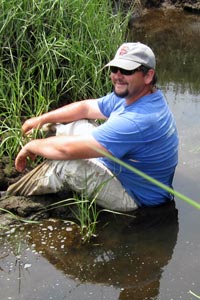
The 2017 Coastal Master Plan contains aggressive projects and an ambitious price tag – around $50 billion. Researcher James Nelson hopes to develop tools to better assess the effectiveness of restoration projects. Previous assessments required hours in the field and boots on the ground; Nelson plans to approach from a different angle. Using a specially equipped Unmanned Aerial Vehicle (UAV) – a drone to most – he will collect and analyze images of coastal Louisiana. “Every picture carries data; we’re going to extract that data,” says Nelson. Currently, the bottleneck on projects like this is the analysis of collected images. This is a gap in the industry. Nelson and his lab will develop a more efficient and timely analysis platform, which has the potential to be highly valuable. Nelson says, “Louisiana is spending billions of dollars on restoration, but we need know what is working and what isn’t. This platform will allow us to more rapidly see how things are responding. We’re running out of time to figure things out. We only have so many resources. Let’s make good decisions.”
Fish Community Profiling on Artificial Reefs: An Environmental DNA Approach
Principal Investigator: Kyle Piller, Southeastern Louisiana University
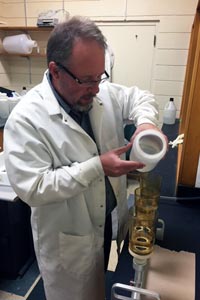 Starting in 2003, a series of artificial reefs were constructed in Lake Pontchartrain. The goal of these structures is to provide habitat for fish, and subsequently fishing spots for anglers. However, learning which species are actually using the reefs is a challenge. Hook and line fishing yields a limited sample and visual surveys in the murky water aren’t always productive. Fish biologist Kyle Piller is hoping to use a relatively new technique to determine which fish frequent the reefs. Aquatic organisms shed DNA in the form of scales, mucus, urine, feces. These cast-offs, collectively termed eDNA, serve as identifiers of which species have been there before. Piller will collect and analyze eDNA from reefs of different ages and different composition to see if fish have a preference. “If the state is going to spend money on habitat augmentation, we want to know if we are getting our money’s worth. This research will give us an idea of which type of material is best for habitat and colonization of fish,” states Piller.
Starting in 2003, a series of artificial reefs were constructed in Lake Pontchartrain. The goal of these structures is to provide habitat for fish, and subsequently fishing spots for anglers. However, learning which species are actually using the reefs is a challenge. Hook and line fishing yields a limited sample and visual surveys in the murky water aren’t always productive. Fish biologist Kyle Piller is hoping to use a relatively new technique to determine which fish frequent the reefs. Aquatic organisms shed DNA in the form of scales, mucus, urine, feces. These cast-offs, collectively termed eDNA, serve as identifiers of which species have been there before. Piller will collect and analyze eDNA from reefs of different ages and different composition to see if fish have a preference. “If the state is going to spend money on habitat augmentation, we want to know if we are getting our money’s worth. This research will give us an idea of which type of material is best for habitat and colonization of fish,” states Piller.
Incorporating Life into Living Shorelines: Can Gulf Ribbed Mussels Reduce Shoreline Erosion and Enhance Restoration Practices?
Principal Investigator: Brian Roberts, Louisiana Universities Marine Consortium (LUMCON)
Co-PIs: Ariella Chelsky (LUMCON) and Anthony Rietl (LUMCON)
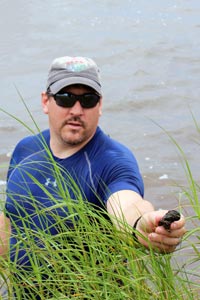 Wetland loss in Louisiana is occurring faster than anywhere in the country. Brian Roberts notes, “Down at LUMCON, we see the loss outside our windows every day.” Roberts hopes to demonstrate the potential benefits for living shorelines in many of the vulnerable coastal areas. A living shoreline takes advantage of living organisms to promote marsh stabilization. In contrast to sea walls and revetments, living shorelines maintain the connectivity of a marsh to its adjacent waters. On the U.S. East Coast, Atlantic ribbed mussels and marsh grasses have been shown to complement each. When found together they work synergistically to shore up the wetland. In the Gulf, mussels had previously been overlooked because it was assumed that they weren’t abundant enough. However, recent research seems to indicate otherwise, and Roberts and his lab are seeking to add mussels into the coastal restoration conversation. “Our best hope of long-term sustainability is going to require a holistic ecosystem approach,” says Roberts. “We’re interested in seeing if adding Gulf ribbed mussels will enhance these living shoreline projects”
Wetland loss in Louisiana is occurring faster than anywhere in the country. Brian Roberts notes, “Down at LUMCON, we see the loss outside our windows every day.” Roberts hopes to demonstrate the potential benefits for living shorelines in many of the vulnerable coastal areas. A living shoreline takes advantage of living organisms to promote marsh stabilization. In contrast to sea walls and revetments, living shorelines maintain the connectivity of a marsh to its adjacent waters. On the U.S. East Coast, Atlantic ribbed mussels and marsh grasses have been shown to complement each. When found together they work synergistically to shore up the wetland. In the Gulf, mussels had previously been overlooked because it was assumed that they weren’t abundant enough. However, recent research seems to indicate otherwise, and Roberts and his lab are seeking to add mussels into the coastal restoration conversation. “Our best hope of long-term sustainability is going to require a holistic ecosystem approach,” says Roberts. “We’re interested in seeing if adding Gulf ribbed mussels will enhance these living shoreline projects”
Integrated Research
Communicating Climate Tools to Coastal Stakeholders
Principal Investigator: Jean “Renee” Edwards, Louisiana State University (LSU)
Co-PIs: Alan Black (LSU), Barry Keim (LSU) and Andrea Miller (LSU)
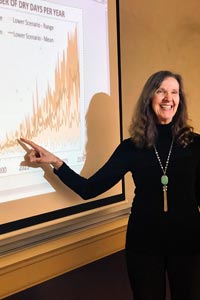 Louisiana was the last state added to NOAA’s Sea Level Rise Viewer, due to the abundance of levees across the state and the uncertainty of how these would impact sea level rise scenarios. If NOAA was uncertain about climactic impacts in our state, it’s safe to assume that emergency managers have a challenge in evaluating all the variables and making critical decisions. Renee Edwards and her team are hoping to make their jobs a little easier by evaluating a variety of predictive tools available and helping connect emergency managers to them. “We want them to find the right tool and know how to use it,” says Edwards. “Some tools are technical and can be intimidating to learn on your own.” Edwards and her team will also work with another trusted source for climate information – broadcast meteorologists. Her research team is hoping to see which messages resonate most strongly with coastal residents. “In Louisiana, we are so vulnerable to climate and weather events.”
Louisiana was the last state added to NOAA’s Sea Level Rise Viewer, due to the abundance of levees across the state and the uncertainty of how these would impact sea level rise scenarios. If NOAA was uncertain about climactic impacts in our state, it’s safe to assume that emergency managers have a challenge in evaluating all the variables and making critical decisions. Renee Edwards and her team are hoping to make their jobs a little easier by evaluating a variety of predictive tools available and helping connect emergency managers to them. “We want them to find the right tool and know how to use it,” says Edwards. “Some tools are technical and can be intimidating to learn on your own.” Edwards and her team will also work with another trusted source for climate information – broadcast meteorologists. Her research team is hoping to see which messages resonate most strongly with coastal residents. “In Louisiana, we are so vulnerable to climate and weather events.”
Managed Aquifer Storage and Recovery in Coastal Louisiana
Principal Investigator: Emad Habib, UL
Co-PIs: David Borrok (Missouri University of Science and Technology), JoAnne DeRouen (UL), Kari Smith (UL) and Frank Tsai (LSU)
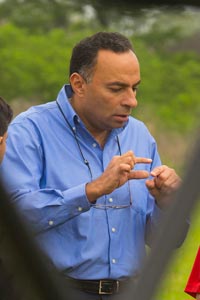
photo credit: UL
Reservoirs in southwestern Louisiana have long been used for domestic, agriculture and industrial purposes. Overtime, this depletes the aquifer. This is particularly troublesome on the coast because two additional problems accompany it: subsidence and salt water intrusion. Emad Habib and the project team are hoping to improve the situation by developing a plan for Aquifer Storage and Recovery (ASR). “This is a unique opportunity,” says Habib. “We have an abundance of surface waters – we all see it when it floods. We don’t want to lose this water to the Gulf of Mexico when it can help fight subsidence and salt water intrusion.” Habib will be focusing on a pilot site in the Chicot Aquifer in Vermillion Parish. Surface waters can be stored and filtered in engineered wetlands before being injected back into the aquifer. In addition to evaluating the ecological and engineering feasibility of this project, Habib and his team will also work with stakeholders. Currently, the aquifer is being overdrafted by 1.3 million cubic meters per day. While this technology has been used elsewhere, for successful application in Louisiana, local residents need to fully understand the benefits of ASR.
Development of a Sustainable Southern Flounder Fishery in Louisiana
Principal Investigator: Stephen Midway, LSU
Co-PIs: Joseph West (LDWF) and Jack Issacs (LDWF)
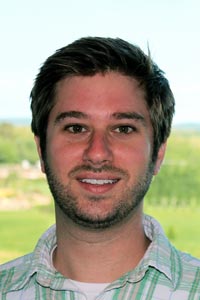 The Louisiana Legislature mandates the assessment of certain commercial and recreational species to monitor how a species is doing. Currently, there hasn’t been enough information collected to say how well southern flounder are doing. “Sustainable fisheries are built on good information, and currently we lack reliable data on southern flounder,” says fisheries biologist Steve Midway. His research team will be working directly with Louisiana Department of Wildlife and Fisheries (LDWF) to fill this information gap. Together they will sample fish, interview fishermen and rely on long-term institutional knowledge in fisheries. The scientists will determine a fish’s age and maturity by looking at a small tissue sample, while recreational fishermen interviews will determine who fishes for them and where. The culmination of this research project will be a southern flounder fishing tournament in Lake Calcasieu, hoping to build even further enthusiasm for the flounder fishery. “In addition to being delicious, flounder are a popular recreational species in other Gulf states. We have a chance to build that here,” says Midway.
The Louisiana Legislature mandates the assessment of certain commercial and recreational species to monitor how a species is doing. Currently, there hasn’t been enough information collected to say how well southern flounder are doing. “Sustainable fisheries are built on good information, and currently we lack reliable data on southern flounder,” says fisheries biologist Steve Midway. His research team will be working directly with Louisiana Department of Wildlife and Fisheries (LDWF) to fill this information gap. Together they will sample fish, interview fishermen and rely on long-term institutional knowledge in fisheries. The scientists will determine a fish’s age and maturity by looking at a small tissue sample, while recreational fishermen interviews will determine who fishes for them and where. The culmination of this research project will be a southern flounder fishing tournament in Lake Calcasieu, hoping to build even further enthusiasm for the flounder fishery. “In addition to being delicious, flounder are a popular recreational species in other Gulf states. We have a chance to build that here,” says Midway.
Educating Louisiana’s Future: Boosting K-12 Instruction of Coastal Environments
Principal Investigator: Jill Trepanier, LSU
Co-PI: Pamela Blanchard (LSU), Edward Bush (LSU AgCenter), Andy Nyman (LSU AgCenter), Mark Shafer (LSU AgCenter and LSU)
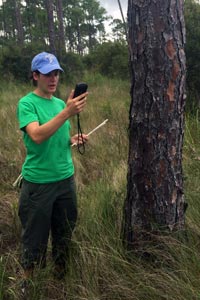 Louisiana’s coastline has faced many hazards – hurricanes, floods, subsidence and climate. Through decades of change, trees stood watch and took notes. These sentinels contain valuable information and a team of researchers is hoping to tap into this previously unused data. “When it comes to risks – if a tree faces it, coastal residents will face it too,” says Jill Trepanier. “We’re using trees to tell us information about the past. We’ve only been collecting temperature data for, at most, just over one hundred years. Trees can help us understand climate on a longer scale.” In addition to collecting data and conducting field experiments, the scientists will partner with Pam Blanchard from LSU’s Coastal Roots program to engage Louisiana classrooms. STEM enrichment can set students on a lifelong path of learning. One student on this project is a former Coastal Roots student and has carried his early inspiration onto the university in pursuit of a PhD. The researchers hope to spark similar interests as they advance our understanding of what climate has done and could do on our coastal plain.
Louisiana’s coastline has faced many hazards – hurricanes, floods, subsidence and climate. Through decades of change, trees stood watch and took notes. These sentinels contain valuable information and a team of researchers is hoping to tap into this previously unused data. “When it comes to risks – if a tree faces it, coastal residents will face it too,” says Jill Trepanier. “We’re using trees to tell us information about the past. We’ve only been collecting temperature data for, at most, just over one hundred years. Trees can help us understand climate on a longer scale.” In addition to collecting data and conducting field experiments, the scientists will partner with Pam Blanchard from LSU’s Coastal Roots program to engage Louisiana classrooms. STEM enrichment can set students on a lifelong path of learning. One student on this project is a former Coastal Roots student and has carried his early inspiration onto the university in pursuit of a PhD. The researchers hope to spark similar interests as they advance our understanding of what climate has done and could do on our coastal plain.
